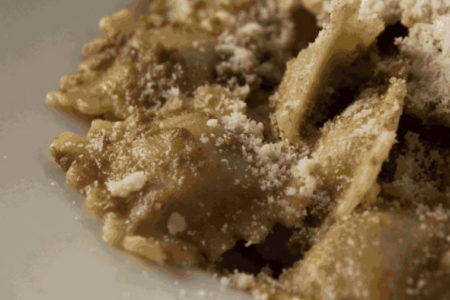
Posted on
Specialties of Monferrato: cardoons, agnolotti, and…farinata!
The food specialties of Monferrato are a voyage through flavor and tradition. Come along for the ride — we have a tasty itinerary in store for you!
The variety of Monferrato cuisine is surprisingly rich, not only for its huge number of dishes and recipes, but also for the ingenuity with which its inhabitants use all the products of their generous land—all the while without forgetting the culinary influences of Liguria, Lombardy, and Emilia Romagna. The Monferrato has never lost its soul that is “cucina povera” and the unbreakable ties to its farming past. These characteristics can be found in the products that we’re about to describe.
SPECIALTY OF MONFERRATO – “HUNCHBACK” GOBBO CARDOON
Cardoons are closely tied to the history of the Belbo Valley, and represent an important and emblematic symbol of the area. These cardoons find a natural habitat in the sandy earth of Nizza Monferrato, Incisa Scapaccino, and Castelnuovo Belbo. They are precious and rare, originating from north-central Africa and already noted by the ancient Greeks and Romans (Pliny the Elder writes of them in Naturalis historia.).
The cardoon of Nizza Monferrato was one of the first Slow Food Presidia. It is called gobbo, or “hunchback,” because the plant curves towards the sunlight and grows in its characteristic form. The Gobbo Cardoon is commonly used with bagna cauda, the traditional hot dip in Piedmont made from anchovies, olive oil, and garlic. It also makes an excellent filling, side dish, and flan. And, it is the only cardoon in the world that may be enjoyably eaten raw. According to the regulations stipulated by Slow Food, a true Gobbo Cardoon of Nizza Monferrato is the Spadone variety, characterized by its spiky leaves and stem.
SPECIALTY OF MONFERRATO – DONKEY AGNOLOTTI
Agnolotti are a filled pasta in Piedmont with a traditionally square shape. Tradition has it that this fresh pasta was invented to use up leftover roasted meats, which are minced and mixed together with vegetables, rice, and other ingredients to be used for the filling.
Horse breeding has always been prevalent in the Monferrato, which led to the popularity of donkey meat. In particular, donkey agnolotti are typical of the municipality Calliano d’Asti, where a local festival is held every June for the dish; but these agnolotti may also be found at the Festival delle Sagre in Asti, held every year on the second weekend of September.
SPECIALTY OF MONFERRATO – PIEDMONTESE FARINATA
Farinata is a savory pancake or flatcake made from chickpea flour. The Piedmont farinata, also called “Bela Cada,” is like a thin, salted focaccia that should be eaten as its name suggests in dialect—bella calda, or nice and hot from the oven. It’s made from mixing chickpea flour, water, olive oil, salt, and pepper on the most basic level, but many bakers and chefs have created their own tasty versions.
Legend has it that the farinata was invented by accident in 1284 when Genoa defeated Pisa in the battle of Meloria. The Ligurian ships found themselves in the midst of a storm, and in the wild confusion, casks of olive oil and sacks of chickpeas were upturned, mixing with the salty ocean water. So as not to die of hunger, the sailors gathered as much of the slushy mixture as they could and dried it out in the sun. This improvised “recipe” became the prototype for the favorite snack or appetizer that is still enjoyed today. A traditional product of the Apennines area, farinata is also a specialty of Nizza Monferrato. Older generations remember the colorful character of the traveling Tantì, who sold them farinata in old straw paper from atop his covered tricycle. A toot from his horn announced his presence to adults and children alike who loved eating his farinata.


